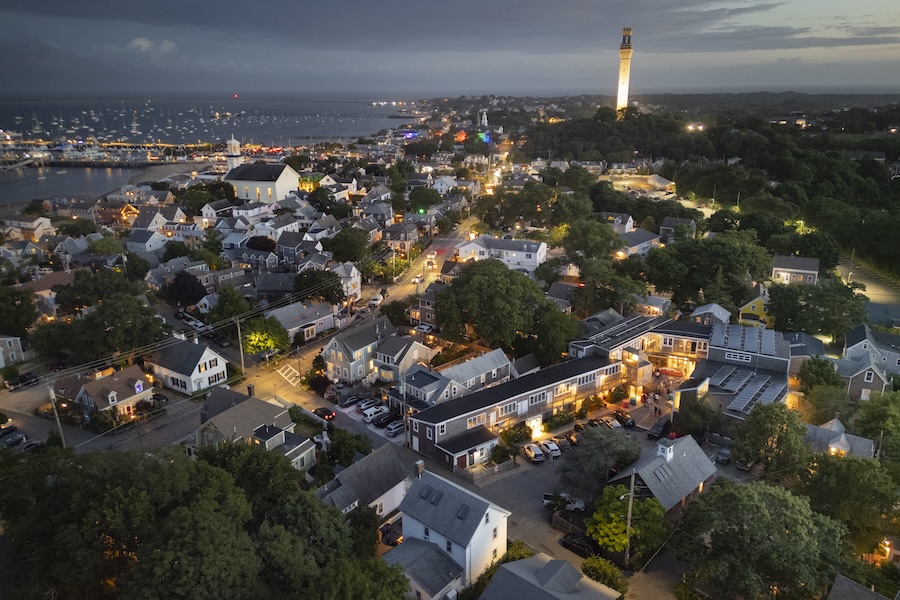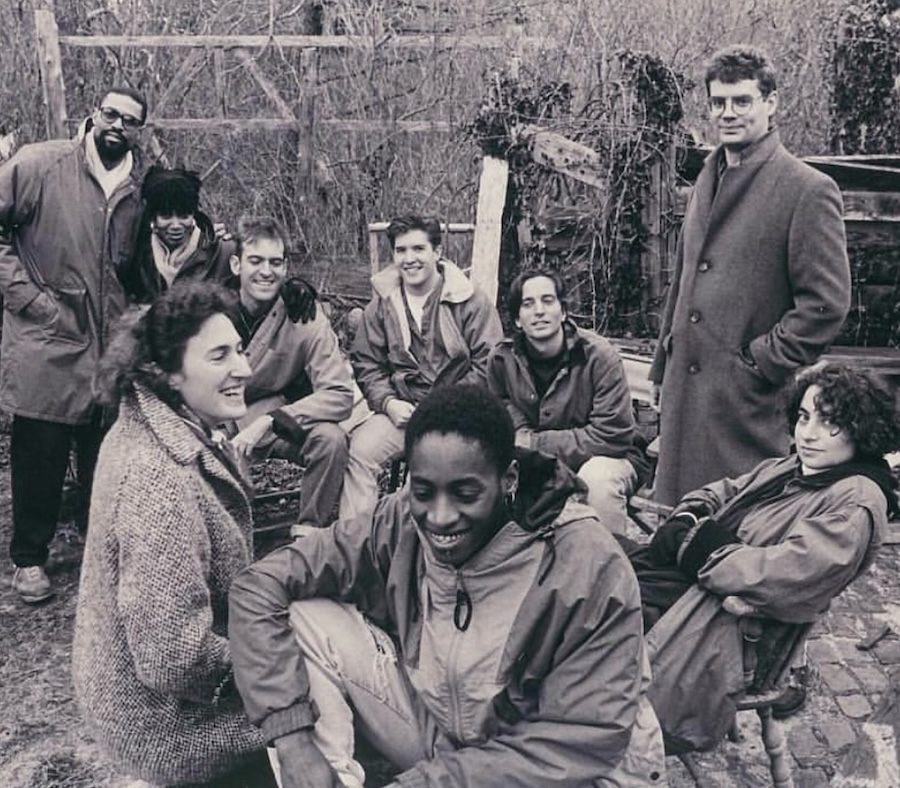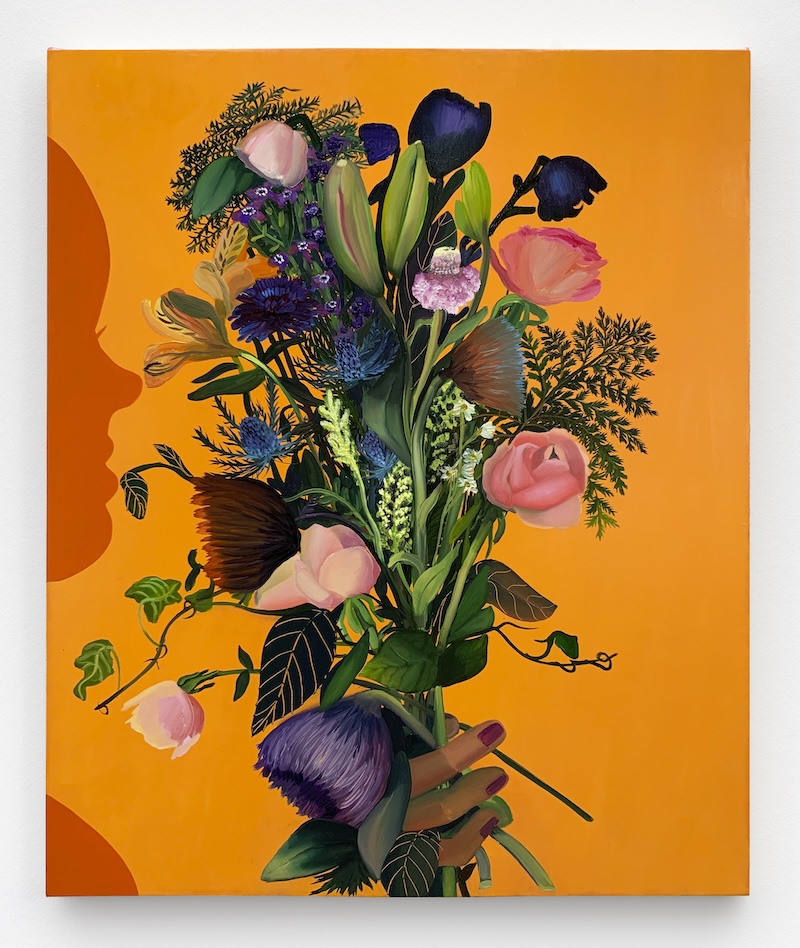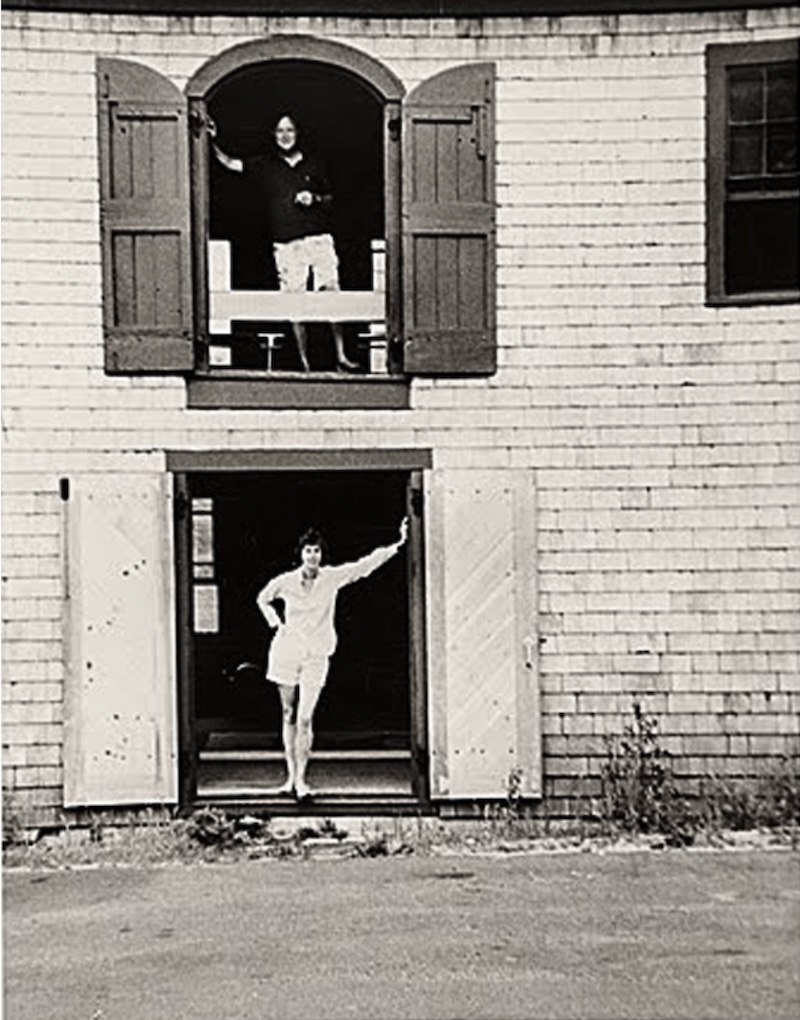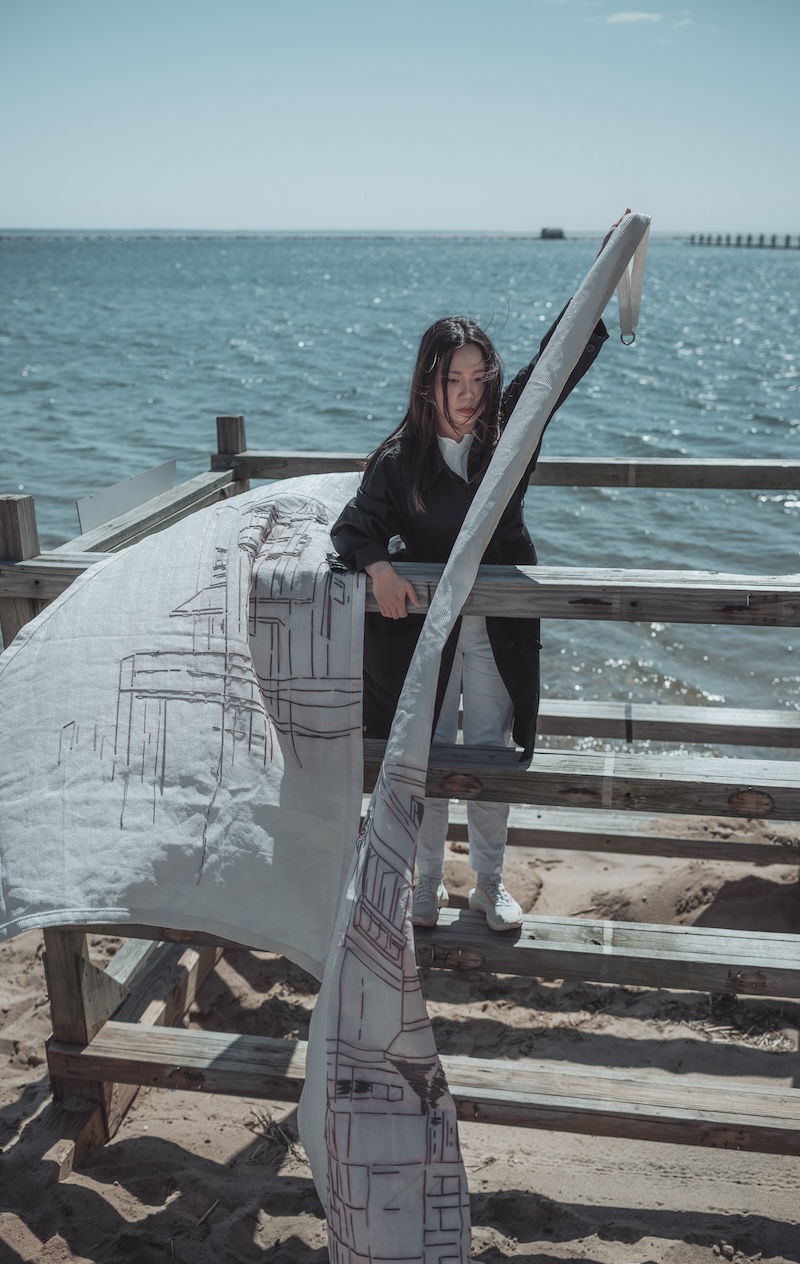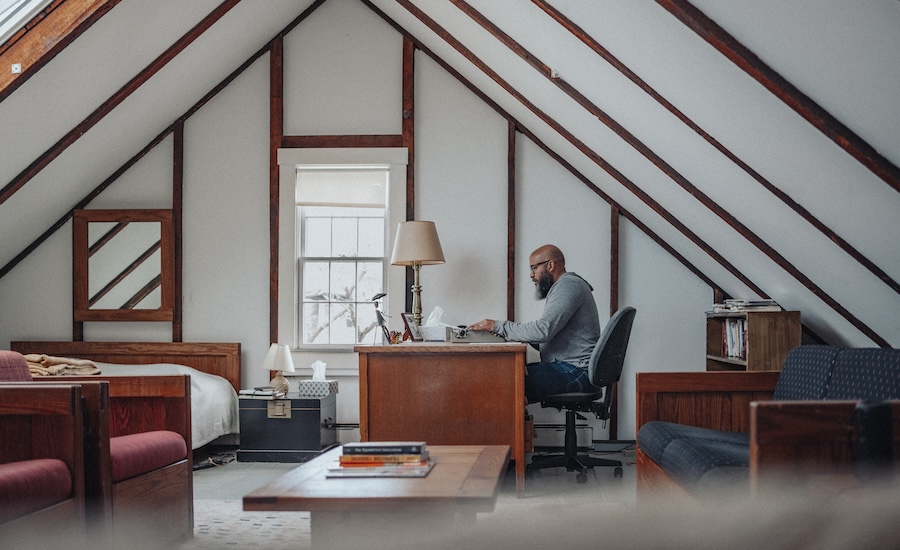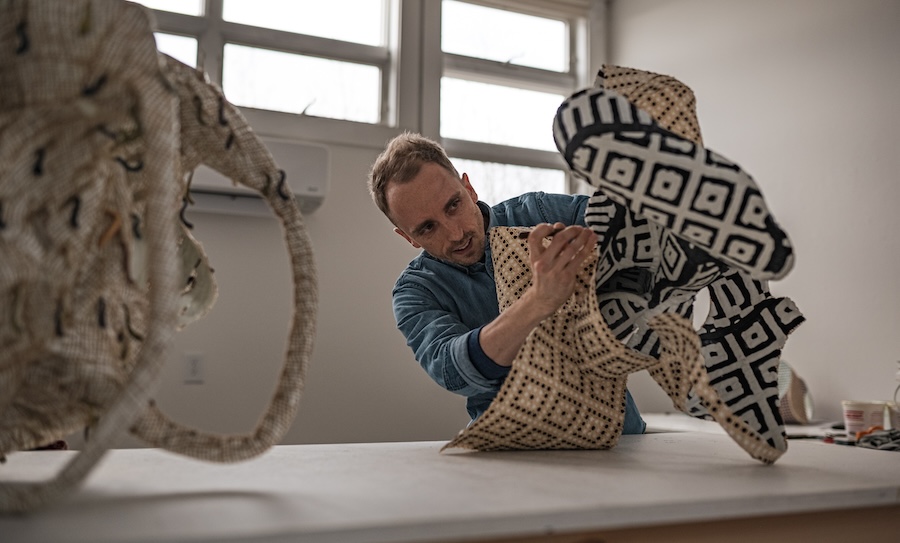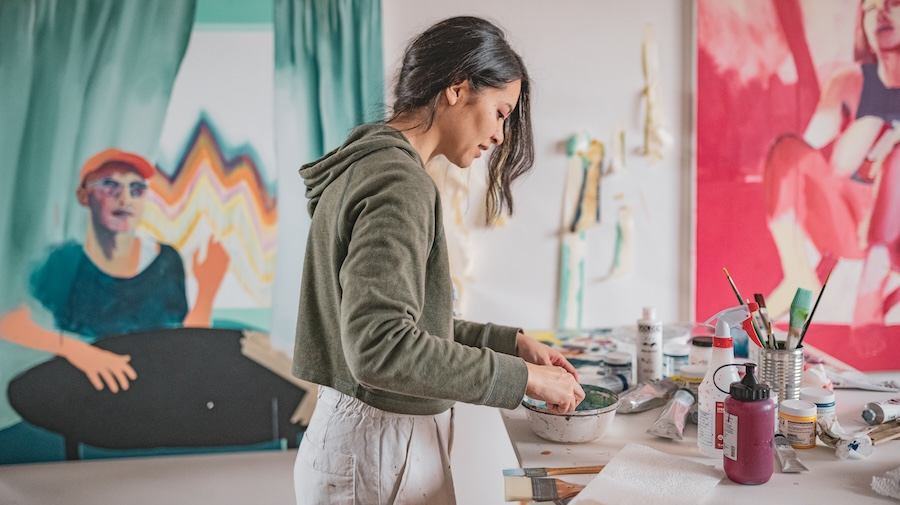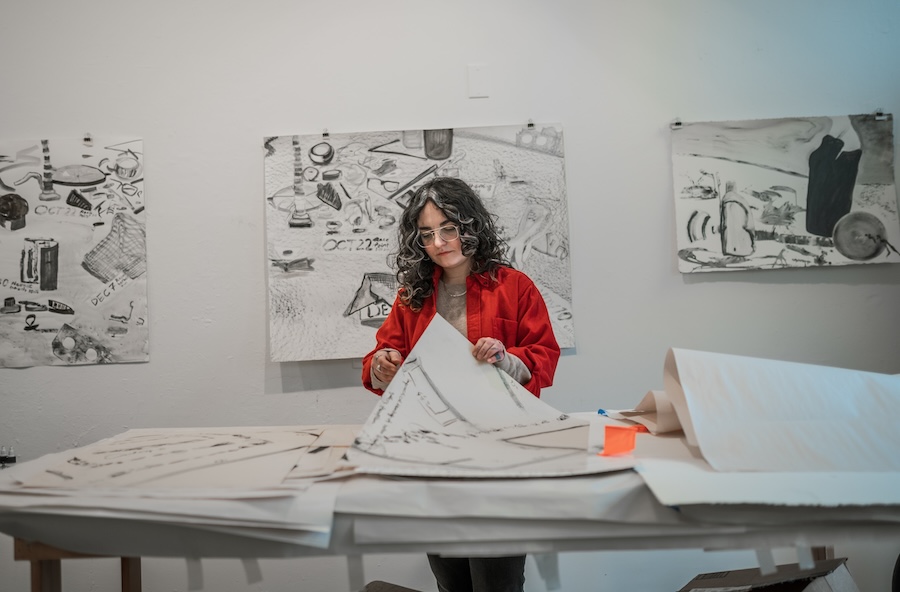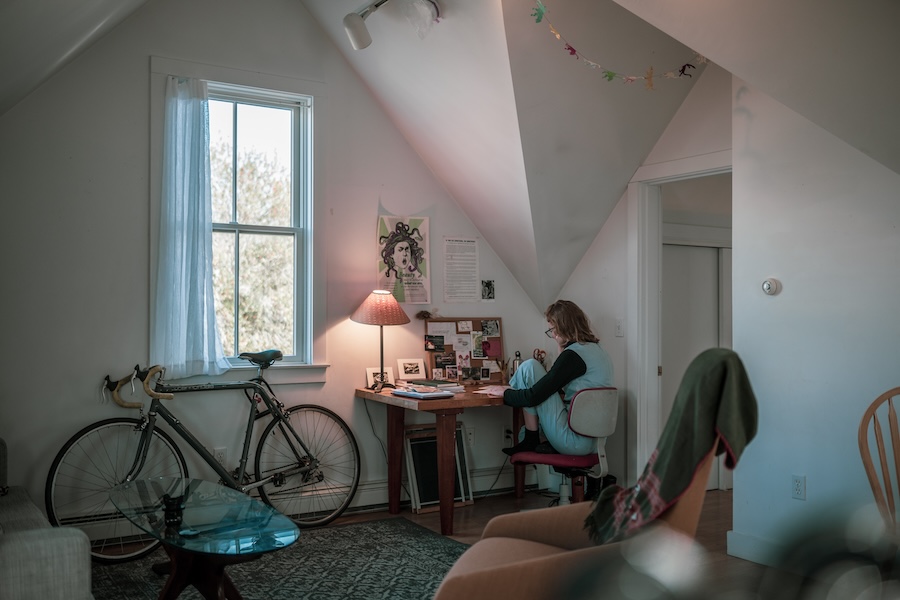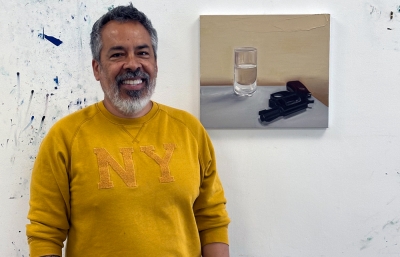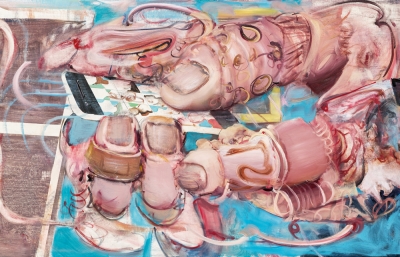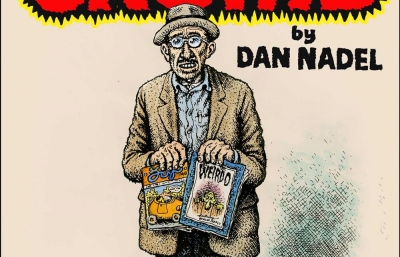Art residencies are like idyllic adult summer camps, and although the Fine Arts Work Center has a fulsome summer program, their fellowships take place when a knit cap and down vest are appreciated. That hardly discourages the writers and visual artists who attend, as expressed by poet John Murillo; “One thing is to have a good idea for a poem or image that is resonant or impactful, but that’s not enough. You need something else to push against or to interrogate. Something about a place like this is that if you sit quietly enough, those things will kind of insist upon themselves.” I marveled at the magic FAWC, founded in the 1960s to nurture the small community of Provincetown and create a haven for creatives in the nation’s oldest continuous art colony. Executive director Sharon Polli sketched out the history and current happenings of this cultural treasure on the Cape.
Gwynned Vitello: Years ago, when I stayed in Nantucket, my group couldn't stop talking about their upcoming visit to P-Town. I was leaving before their trip, but kept wondering what was so special about the place.
Sharon Polli: It’s a pretty remarkable creative community nestled right in the heart of a national seashore and surrounded by sand dunes, open ocean and really interesting ecosystems that have inspired artists and writers for more than a hundred years, and I’m sure, beyond that as well. It’s also, of course, a haven for LGBTQ communities, and so there’s this really interesting feeling of freedom when you come to Provincetown, a sense of possibility and creative transformation that comes from the unparalleled beauty and landscape and this sense that everyone is really living themselves to the fullest.
So, as writers and artists come here, I think they’re inspired by the light and landscape, but also by this incredible community of other people who are artistic practitioners. Something we hear from our fellows who come here for the seven months is that it’s amazing to be part of a community where everyone has some sort of artistic practice or commitment. Whether you come for one week or a summer workshop at the Fine Arts Work Center, or you come for the seven month residency, you do pretty quickly tap into the legacy of this place that has inspired artists from Jackson Pollock, Robert Motherwell and Helen Frankenthaler, to the playwrights Eugene O’Neill and Tennessee Williams, you start to feel the legacy. We like to say that Provincetown has good ghosts. When you’re here, it leads to a sense of fertile transformation and possibility that becomes a creative home for artists and writers who return again and again.
How did it become a mecca for the LGBTQ community as opposed to other beautiful towns?
I think of something that one of our poets, Mark Wunderlich, chair of our writing committee, kind of lovingly said to me, that it’s like a port community in the way that seafaring ports all over the world become places of openness and afford the ability for people to come and go and have different lifestyles and different things. And so I always picture that, the idea of wonderful kinds of alternative communities, pirate communities all over the world.
Ah yes, like San Francisco, my home base.
Parallel to that, artists and writers always came here, say, from the West Village to the Cape Cod School of Art, in the sense that creativity attracts creativity, and these places can become a nexus for artistic genius that feed one another. What you see in Provincetown is that people are nourished by being in artistic conversation with one another. It helps you hone and experiment when you're surrounded by people who are also engaged in that kind of exploration and pushing the boundaries of the practice. I think the secret sauce of the Fine Arts Work Center is the artistic solitude of the residency, the stillness of the quiet off-season combined with being surrounded by peers who are committed to the struggle of the studio or the page as much as you are. That elevates you, pushes you and allows you to reach new creative depths. We see year after year that fellows who come and stay for seven months in residence develop lifelong partnerships that they return to and continue to explore throughout the trajectory of their practice.
It seems very unique that your fellows are writers and visual artists, and an equal number at that!
It is fairly unique. There’s certainly multidisciplinary residencies that support artists of different disciplines, but I think this special combination of fiction writers, poets and visual artists is fairly singular in the field.
It’s absolutely much more than a marriage of painting and wall text! I imagine that it may have started as a writing community, and if so, when?
That was my first thought, but the first award actually was for visual arts fellows and was hosted by the Provincetown Art Association and Museum in 1968. It was followed by the inaugural group of writing fellows in 1969, a cohort that included the Nobel Prize winning poet Louise Glück, who passed away last year.
Because it’s so gorgeous and offers so much opportunity to bond, I’m guessing that fellows come back to visit, and more.
We do offer fellows the opportunity to return through various programs and really try to have a constellation of programs that support artists at all stages of their career. Past fellows may come back as faculty in our summer workshops or in a returning residency that allows for a self-directed retreat.
Explain how fellows can arrive and determine how they choose to spend their time. This is what I think is really special.
It is completely a gift of time and space, and there is absolutely no expectation. There’s no teaching requirement, no exhibition requirement, but truly unstructured time at the space for someone to define for themselves what it means to be a working artist or writer. I think the founders really believed a solitary journey was essential, that time at a studio or keyboard is something that needs time and agency on the part of the artist.
(Robert Motherwell and Helen Frankenthaler in the main barn of the Days Lumberyard. Photo courtesy of Fine Arts Work Center.)
Do they have the opportunity to meet with a mentor, a counselor of sorts?
We have two wonderful program committees made up of past fellows, as well as leading artistic voices in their fields, who are charged with the creative life of the fellowship, so there’s an informal mentoring and network of people who support them. We also have second year fellows made up of people returning, a poet and fiction writer along with two visual artists, so there’s an informal mentoring.
So someone could choose whether or not they want that guidance, or simply want to be on their own?
When we have orientation, I love it when they’re told that their time is their own. Our writing committee chair will say, “You can come here and sleep and read Tolstoy for seven months.” There are no expectations, which is so liberating given the nature of the commercial art world and the pressures of publishing.
That’s so refreshing, especially when you think of what college students miss when their professors have to worry about being published rather than teaching. I’m wondering, do you stay local or are fellows chosen from all over?
We get 1,400 applications from around the world in any given year, and we focus primarily on the caliber and quality of the work samples, as well as whether the residency at that moment would seem to be a pivotal opportunity. And we don’t require letters of recommendation.
And I assume there are no courses on professional development or the business of being an artist!
I always love talking to past fellows about what they would discover here had they not had the time to investigate, if they hadn’t lived in Provincetown in the dead of winter for seven months. You can go on the beach for solitary walks, just you and the foghorns, where you don’t encounter another person for hours at a time.
Since they can choose how to spend their time, I’m curious about the living situation. Do they live in their own space? Do they share meals together?
We manage and steward about 40,000 square feet of artist live/work space in historic buildings. Each apartment or studio has a kitchen and contained living space, and people can bring partners, emotional support pets, and at times, experience the birth of a child. We do have a lot of shared community spaces, including a lounge and gallery that continue a long tradition of potlucks, movie nights and dance parties, things that define a community. The visual artists also get a beautiful 400 square foot studio space with wonderful natural Provincetown light.
Tell us about the summer program, which is open enrollment, right?
Yes, it takes place in the heart of Provincetown’s thriving summer, 65 one-week workshops over the course of ten weeks where you can enroll in memoir, fiction, poetry, printmaking, and photography, among other practices. In the course of a week, participants start off with a community breakfast, then go off into workshops. In the evening, the town gets to enjoy faculty/artist talks, open studio events, and readings, all free and open to the public. 
All this sounds absolutely utopian. What’s the origin story?
The founders, a collective of writers and artists who came to think that Provincetown was becoming inaccessible to emerging artists and wanted to do something about it. I had the privilege of hearing the correspondence between the abstract expressionist Robert Motherwell and the director of the Provincetown Art Association and Museum where they were corresponding about raising funds to buy oil heat for the artist studios to keep the program growing. So it really was a grassroots effort. In 1972, the historic Day’s Lumberyard became available, and the founders got together and raised $120,000 to purchase it. In the early days, the artists’ studios were in their apartments, which was toxic. There are apocryphal stories about the board locking the doors at the end of a meeting and passing the electric bill around with the proviso that no one could leave until enough was collected to pay it. Bit by bit, practicing artists and writers found ways to keep this place alive, and at our 50th anniversary, we were able to start raising funds for our first ever endowment. It really has been the love and commitment of people who just wanted to preserve Provincetown as a place for artists and writers.
No black-tie, evening gown galas, but something that is, well, truly organic, sustained by practicing artists.
I think that being governed by the people whose mission it is for you to serve shifts the dynamics of a place and makes sure the values remain true to the original vision. I always remember writer telling me that they spent their fellowship watching a sculpture across the courtyard from their studio. They said that watching that sculptor chisel and hone that marble every day makes them want to do the same thing with words on a page. I feel like that really defines this unique, creative community of artists and writers alongside each other.
Learn more about the programs at the Fine Arts Work Center at fawc.org // This interview was originally published in our WINTER 2025 Quarterly edition, available at Shop.Juxtapoz.com.

